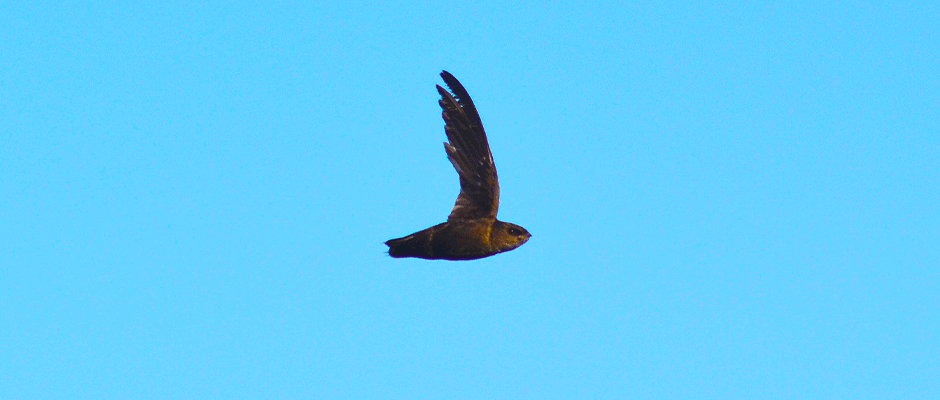Share this article
Not only Santa needs his chimneys
On Shepherd University’s campus in Shepherdstown, W.V, chimney swifts (Chaetura pelagica) roost in a chimney on Sara Cree Hall before heading south in the fall. Some evenings in the fall, over a thousand birds may be found on a given night entering the chimney.
But the brick building, which was constructed in the early 1950s and used as the school’s sports center, is going to be demolished in the spring of next year. The university has replaced it with a new wellness center, and the old building is no longer needed and in a state of disrepair. This means the birds will lose one of their major migratory roosts in West Virginia.
“In the meantime, the local community and Potomac Valley Audubon Society have been watching chimney swifts on campus for over a decade or so,” said Sher Hendrickson, a professor in the biology department at Shepherd University who has taken an interest in the group’s efforts to conserve the birds.
Birdwatchers had documented that capping the chimney in nearby Knutti Hall about five years ago caused the swifts on campus to move to Sara Cree Hall, which has a much larger chimney, according to Hendrickson.
Earlier this year, Shepherd undergraduate research student Tyler Garrett, who is working on documenting the swifts’ use of the Sara Cree chimney during migration, systematically recorded the number of birds starting in August, when they began to migrate to their wintering grounds in Peru. On one night alone, Garrett and local birders counted 1,500 birds entering the roost in the Cree chimney.
As part of an effort to preserve a roost for the birds, the university, the Potomac Valley Audubon Society, concerned local citizens and the West Virginia Division of Natural Resources plan to uncap the Knutti chimney, which Hendrickson says has been an important migratory roost for up to 1,000 swifts during fall nights in the past. The plan is to build one or two faux chimneys nearby to accommodate the larger number of roosting birds documented by Garrett and others. Also in the planning stages are efforts to raise money from the local community to support conservation projects for the chimney swifts in the future. A town hall meeting hosted by the city is scheduled next week to discuss these plans further.
Chimney swifts have been listed as near threatened by the IUCN since 2012. The major causes for their decline include loss of old growth forest as a result of human activities and development. Overall, there has been a 65 percent decline in their population between 1966 and 2010.
“I think what’s nice is this project will be a good partnership between Shepherd University, Potomac Valley Audubon, the DNR in West Virginia, and the local community. There are also members from the National Conservation Training Center supporting the efforts.” Hendrickson said. “These partnerships will provide a foundation for future conservation efforts in the area.”
Check out a video taken in August 2016, where nine observers and three additional visitors watched chimney swifts circle the vacant chimney on Sara Cree Hall before dropping into the chimney to roost.
Header Image: A chimney swift flies through the blue sky. Local people are working on conserving a population of the birds in West Virginia. ©Andrew C.








